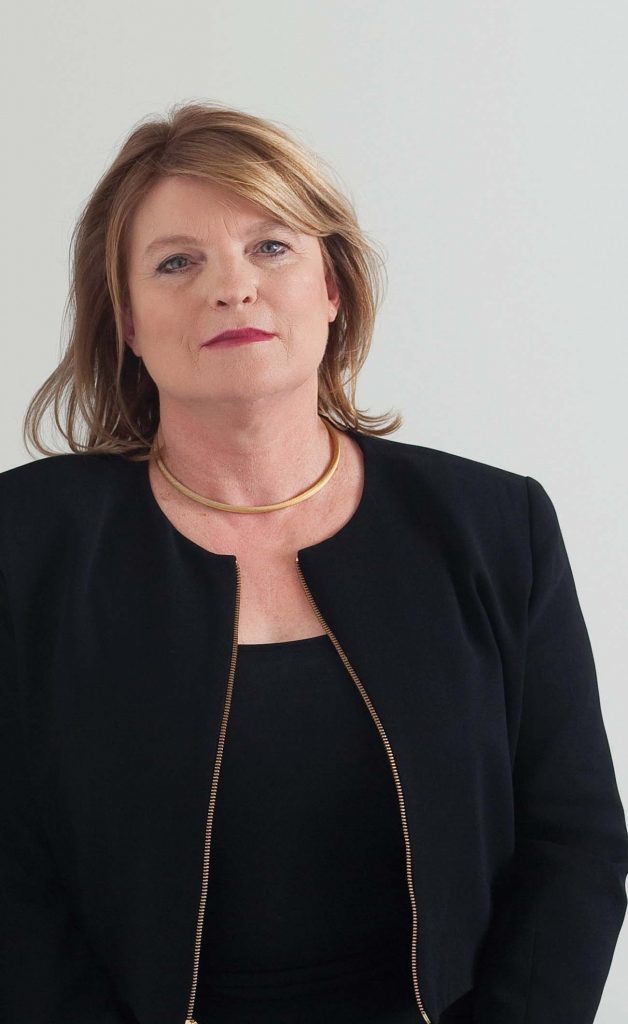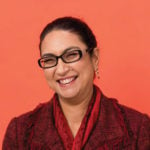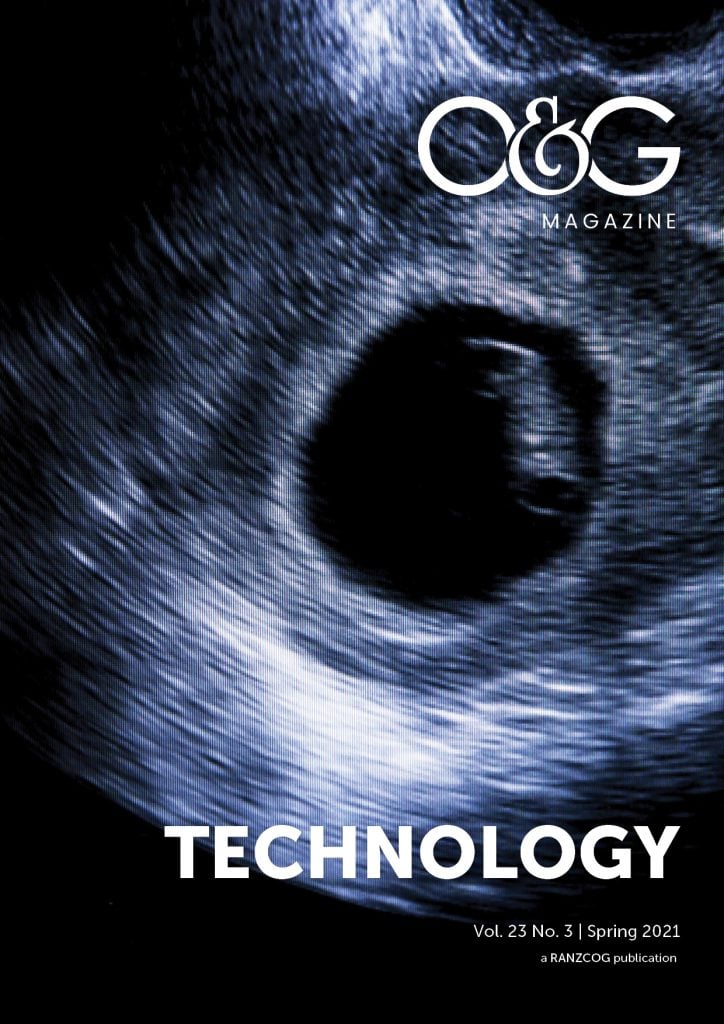This O&G Magazine feature sees Dr Nisha Khot in conversation with RANZCOG members in a broad range of leadership positions. We hope you find this an interesting and inspiring read. Join the conversation on Twitter #CelebratingLeadership @RANZCOG @Nishaobgyn
Dr Hilary Joyce
FRANZCOG
In this issue of O&G Magazine, I interview Dr Hilary Joyce. Dr Joyce has had an impressive career as an O&G and fertility specialist, and in medical leadership. She was the first, and remains the only, woman President of the National Association of Specialist Obstetricians and Gynaecologists (NASOG) between 2009–2011. Prior to this, Dr Joyce was the Executive Secretary at NASOG from 2006–2009. Dr Joyce has held leadership positions within AMA as the O&G representative on Federal AMA Council where she was on the Economics & Workforce Committee as well as the Ethics & Medicolegal Committee. She was also the NASOG Representative to RANZCOG Council during 2003–2007. Her stepping stone to medical politics was being elected to Council of the Australasian Menopause Society in 2001, an extension of her clinical interest in reproductive endocrinology. You can follow Dr Joyce on Twitter @drhilary_joyce.

What made you choose a career in O&G?
That is a very easy question to answer because O&G chose me! I thrived on academic success graduating first place in O&G at my medical school and second overall in the year. I had a hugely positive reception from female patients as a medical student and a young, professorial mentor who encouraged my career path. My inclination may have been towards physician training, but the unique appeal of obstetrics combined with medicine and surgery was difficult to resist. I find it intriguing that despite the leaning towards medicine, it is the procedural aspects of fertility treatment that now appeal to me the most.
If you had the opportunity, what would you change in your career?
There have been many sliding door moments in my life. Looking back, I would have returned to Melbourne when I finished my post-membership training in UK. With a newborn unquestionably commanding my attention, I accidentally became a trailing spouse. What started as a six-month stint in the Riverina, where my husband had been in the RAAF, turned into 10 years – a hidden decade!
I would have loved to complete CREI training had it existed at the time.
In medical politics, I would have accepted a requested nomination to Federal AMA Council Executive.
Many of my Yes and No responses were however okay.
What are some of the moments that have given you the most joy?
Again, academic success was a source of great satisfaction.
I enjoyed representing my colleagues and medical politics became central to my professional life.
Being a fertility specialist at Genea in Sydney, having a hand in creating babies who would otherwise never have been born and families that would otherwise not have existed has been a privilege. I enjoy receiving photos of my babies, and families who send me annual birthday updates hold a very special place in my heart.
Restoring vitality to women who had been destroyed by the most severe endometriosis.
Returning to my past life as an obstetrician, it gave me great pleasure to be a doctor’s doctor – caring for colleagues, especially delivering their babies.
There was some beauty in a career where cumulative experience and building of skills over time were valued, and there was room for evolving interests.
Your career has spanned a time of significant advances in fertility treatment including laparoscopic surgery. Could you tell me more about your own journey?
The first IVF baby in Australia was born when I was doing a term in gynaecology at RMH before I started formal O&G training at RWH. Yes, I have witnessed some extraordinary advances – the development of the world’s first vaginal US probe in Sydney, the transition from laparoscopic to US-guided egg retrieval, major improvements in IVF success rates and the evolution of genetic diagnosis. The new Medicare rebate for Preimplantation Genetic diagnosis is long overdue and will be cost beneficial in prevention of serious genetic disorders such as Cystic Fibrosis. Now, late in my career, at least one child in every classroom has been conceived by IVF. Egg freezing has added an exciting dimension.
I had been on track to take up a position as Senior Registrar in the Reproductive Biology Unit at RWH but instead took the traditional path to UK with my husband for our fellowship training. I had remarkable mentors in ART including Ian Johnston, John McBain and Rob Jansen who created opportunities for me. I was a founding member of AGES and witnessed endoscopic surgery transform from a concept to mainstream reality, which suited me perfectly. We were fortunate to be able to offer both advanced laparoscopic surgery and IVF in our joint practice, sadly not a common experience for patients to be able to access both together. My own lived experience of infertility and endometriosis shaped my career in fertility treatment (just as well I’m not superstitious about my early academic fascination with endometriosis being a self-fulfilling prophecy)! It has been an immensely rewarding journey both intellectually and emotionally.
Who has been the greatest influence in your life?
My daughter. Many will consider this an inversion of the expected response to this question. Despite more obvious career successes, my daughter is undoubtedly my greatest achievement, and I remain in awe of her. Like my mother, I may have discouraged her from studying medicine!
My medical narrative has been shaped by all the people who have passed through my professional life, and to whom I owe a debt of gratitude.
Could you tell me more about NASOG?
NASOG was established in 1989, exactly a decade after the Australian College of O&G came into existence. NASOG is a not-for-profit organisation launched, at least in part, to enable specialist O&Gs to negotiate with government (and to advocate for us with other stakeholders). Its first action was to tackle the then low global obstetric fee rebate. Around 80% of College Fellows became NASOG members in the first two years after its inception. I see its support has waxed and waned depending upon what medico-political crisis is on the horizon. It serves the specific professional and political interests of all Australian O&Gs; more focused than global organisations like the AMA, with an emphasis on access and affordability of services. I stepped up and was elected to NASOG as NSW representative in 2003 during the Medical Indemnity crisis of 2001–2003. I became President of NASOG in 2009 at the height of the Safety Net dispute and found myself in Hansard records of Senate hearings only three weeks later, presenting on behalf of obstetricians, IVF doctors and our patients. In medical politics I found the purpose of my professional life with elevation to NASOG President completing the jigsaw.
What has been your experience of being a woman leader? What lessons have you learnt?
It is tricky trying to unravel the experience of being a leader versus being a woman leader.
I went into and held these positions by being myself.
Would it be different being a leader in a now female-dominant profession?
I see leadership as an exercise in citizenship, a social responsibility. I was at the time unaware of the existence of the impostor syndrome. I learned that relationships between executive members of an organisation and collaboration across organisations were powerful assets. The value of mentorship was brought to my attention by my own mentors and by my mentees who continue to open my mind to new worlds. To my absolute delight, I continue to have an influence on leaders of the next generation, mostly women, and I would be very happy if this were to be my lasting legacy.
I was preparing for this article during the (2020) Olympics and in this context note Natalie Cook, one of the gold medallist pair from Sydney 2000 in Beach Volleyball, saying (of this year’s protégés ahead of their silver win) ‘We laid a path that is full of belief and possibility for them.’ I have an image in mind of a human gymnastic pyramid too. A repeating uplifting pattern.
What advice do you have for medical students/interns who are interested in a career in O&G?
O&G is still the only field of medicine to offer so much diversity of opportunity – obstetrics, medicine, endocrinology, fertility services, imaging, surgery, academia and research – it has everything. There is a huge range of directions your career in O&G can take you. I would recommend exploring all opportunities including alternatives to and structures of private practice early on to get an idea of what a lifetime of O&G can look like. I would advise students to consider where they may want to settle because relocation, especially back to the city, can be difficult. I would like, however, the prospect of nonlinear training, being able to reassess and change direction. As a fertility specialist and mother, I recommend students/trainees consider and prioritise their fertility goals. Finally, a plea to nurture your inner activist and become involved early in advocacy for yourself, your colleagues, your patients and the community.
What do you see as future challenges for O&G? Is there a role for generalist O&G in the future?
Equity is a standout; equity both in representation for O&Gs and in provision of services to women in all communities. Diversity and inclusivity go hand in hand. This challenge deserves much more emphasis than the scope of this interview allows, and there is great talent now contributing at RANZCOG to counter inequity in all forms. My pet concern is ageist sexism/sexist ageism.
I believe we will welcome the emergence of the next female president of RANZCOG in the not-too-distant future.
The profession should be spearheading what journalist and author Gabrielle Jackson describes on the cover of her feminist volume Pain and Prejudice as ‘a call to arms for women and their bodies’ where systems have chronically underserved women, diminished and dismissed them. O&Gs are perfectly positioned to demand and craft change in a medical world where ‘man is the default human being’.
I see credentialing for various aspects of O&G practice as a challenge for the future, so women may identify who has appropriate training and experience, beyond mere claims on a website!
In this age of social media, specialists will have to manage misinformation proactively to ensure that women and families are exposed to correct evidence-based material that can inform their care decisions.
I will also raise the importance of improving collaboration between specialties including colorectal surgeons, urologists, pain specialists etc so that women receive true multidisciplinary care that puts their needs at the centre. Integrated care will deliver the best outcomes for women, and it is up to O&Gs to ensure that we make this the norm.
While subspecialty training understandably gets more popular, we should acknowledge that the role of the generalist O&G is critical to delivering care, especially in rural and remote Australia. We have a global responsibility towards improving women’s healthcare
How do you balance your personal and professional life?
This was always an overriding problem for me and looms even larger in hindsight as I recognise how unreasonable much of what I endured was, undoubtedly compounded by having a partner in the same speciality with an equally demanding professional life – opposing two in five rosters, living at opposite ends of UK, a decade away from family supports while working in a rural practice, massive midcareer upheaval of relocation to Sydney and an unintended long-distance relationship. The ’on-call forever after’ component of private practice was non-negotiable in trying to achieve a balance. Real-time expectations of email/phone responses took a cumulative toll before there was any allowance for telehealth.
So, ‘Do what I say, not what I do’. We even ran a combined AGES-NASOG conference on Challenges in Practice 15 years ago and it is probably worth a revisit at intervals.
My book/travel group has been my escape. I have fond memories and many digital images of travel to beautiful places in pre-Covid times with a wonderful group of women and try to imagine a world in which this could happen again.
I considered alternative words for balance; perhaps integration? Poise appeals most.
What are your future plans – short and long term?
Having had a late-stage career interruption due to health matters, unexpected caring responsibilities and finally issues introduced by Covid, there sadly seems to be little prospect of my resuming clinical practice. My short-term plan is survival. Having had endometriosis for the better part of my life, I have learned that it offers no protection from additional serious medical conditions such as non-gynaecological cancer. I am now resurfacing and am ready for a ‘career after a career’. I would welcome redirecting my skillset and harnessing my activism, preferably with some livelihood attached after my decade of voluntary roles in the 2000s! The position of Secretary of the Department of Health, however, is occupied! I am open to suggestions… Don’t mention the R word!
I commend Dr Kirsten Connan for the initiative of Leaders in Focus and thank her and Dr Nisha Khot for the invitation to participate. I enjoyed the interview after a long virtual connection.
Dr Joyce has been invited to deliver the forthcoming Dan O’Connor Perpetual Lecture at AGES 2021, which will provide more insight into some of these areas.






Leave a Reply